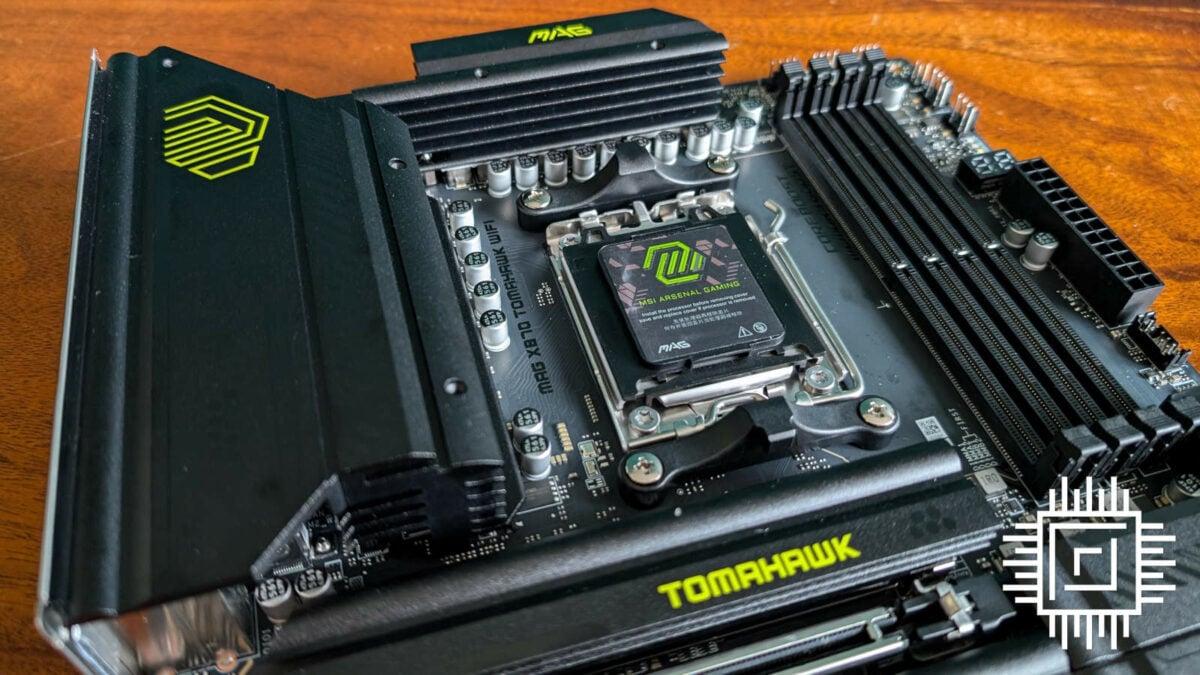Unusually late to the party, the first X870 motherboards are finally hitting the scene. These new AMD chipsets, X870 and X870E, face an uphill battle following the tepid reception of Ryzen 9000 Series processors. It’d be easy for some manufacturers to rehash previous designs with fresh specifications and call it a day, but MSI MAG X870 Tomahawk WiFi packs more punch than you might expect.
Both X870E and X870 are unlikely to tempt existing Socket AM5 motherboard owners from their current setup. Nor should they try to, as much of this platform’s value lies in its longevity. Boards with these chipsets, then, should appeal to those in search of an upgrade. While there’s still plenty of life in X670(E) and B650 options, those in search of a high value package would do well to check out MAG X870 Tomahawk WiFi.
Specifications
While the previous iteration of Tomahawk WiFi rocked AMD’s then-flagship X670E chipset, MSI has opted for the less “extreme” specification this time around with X870. While this may seem like a stepdown at a glance, the motherboard generally emerges more feature-rich than its predecessor.
AMD is keen to emphasise USB 4.0 as a headline feature of its X870 chipsets. MSI includes two ports on the back of the board, giving you twin 40Gbps connections in place of the previous single 20Gbps. They each support DP Alt. Mode too, furthering their value. It’ll likely be some time before the standard becomes widespread, but more bandwidth is always welcome and should improve the longevity of X870 Tomahawk WiFi relative to its X670E counterpart.
While front I/O support remains the same across two generations of Tomahawk, the newer board does sport a larger array of connections round back. These are admittedly slow USB 2.0 ports, but not every peripheral demands bandwidth higher than this specification. Since we effectively trade a 5Gbps and 20Gbps port for two 40Gbps ports, the addition of these four ports is a net win.
| MAG X870 Tomahawk WiFi | MAG X670E Tomahawk WiFi | |
|---|---|---|
| RAM support | Capacity: Up to 256GB Speed: 8,400+MT/s |
Capacity: Up to 256GB Speed: 7,800+MT/s |
| Onboard graphics | HDMI 2.1 (x1) USB Type-C (x2) |
HDMI 2.1 (x1) USB Type-C (x1) |
| PCIe expansion slots | PCIe x16 (x3) | PCIe x16 (x3) PCIe x1 (x1) |
| Audio | Realtek ALC4080 | Realtek ALC1200 |
| Storage | PCIe 5.0 x4 (x2) PCIe 4.0 x4 (x1) PCIe 4.0 x2 (x1) SATA 6Gbps (x4) |
PCIe 5.0 x4 (x1) PCIe 4.0 x4 (x3) SATA 6Gbps (x4) |
| Rear USB | USB 2.0 Type-A (x4) USB 5Gbps Type-A (x3) USB 10Gbps Type-A (x2) USB 10Gbps Type-C (x1) USB 40Gbps Type-C (x2) |
USB 5Gbps Type-A (x4) USB 10Gbps Type-A (x2) USB 10Gbps Type-C (x1) USB 20Gbps Type-C (x1) |
| Front USB | USB 2.0 Type-A (x4) USB 5Gbps Type-A (x4) USB 20Gbps Type-C (x1) |
USB 2.0 Type-A (x4) USB 5Gbps Type-A (x4) USB 20Gbps Type-C (x1) |
| LAN | Realtek 8126-CG 5Gbps | Realtek RTL8125BG 2.5Gbps |
| Wireless | Wi-Fi 7 Bluetooth 5.4 |
Wi-Fi 6E Bluetooth 5.3 |
| Price | £279.99 | £254.99 |
Connectivity also receives a boost via X870, with 5Gbps LAN, Bluetooth 5.4, and Wi-Fi 7. You’ll need a modern network infrastructure to make the most of these features, namely your router but also including any access ports, cables, and switches you have. However, the board will default to older standards and maintain backwards compatibility if you’re not rocking the latest kit.
Much as I’d love to smash the 46Gbps speeds of Wi-Fi 7, I’m contently rocking a Wi-Fi 5 setup at home, like many others around the globe. If you’re in a similar setup, I can attest that the included antenna doesn’t skip a beat in terms of reliability and speed. I also have no issues connecting any Bluetooth controllers or headsets to the system either.
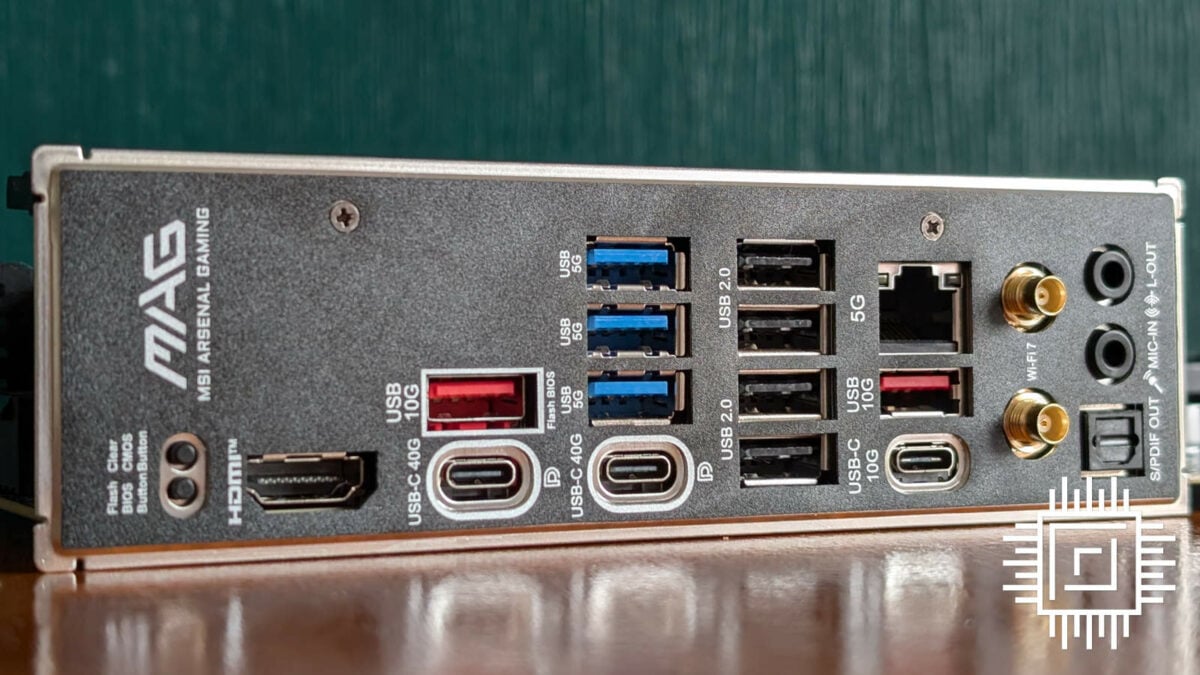
Turning my attention away from the board’s I/O and focussing on PCIe lanes, bandwidth has similarly increased here, too. Although, this does come with a few caveats. MAG X870 Tomahawk WiFi retains the same three PCIe 5.0 x16 lanes as the prior generation but forgoes the single PCIe x1 slot. This diminishes the board’s ability to house expansion cards, though this is an extremely minor drawback.
More pertinently for most users, we now have two PCIe 5.0 x4 expansion slots for M.2 drives. NVMe SSDs with a Gen 5 interface are becoming more common, and (more importantly) cheaper by the day. Like the inclusion of USB 4, most users won’t immediately appreciate the value of this shift but it should become apparent in the years to come.
The remaining M.2 slots are each PCIe 4.0 but they are not equally capable. While one boasts a PCIe 4.0 x4 interface, the other is PCIe 4.0 x2. This makes the latter equivalent to PCIe 3.0 x4, with 8GB/s of bandwidth. While I would’ve liked to have seen parity across these two ports, it’s easy to forgive with the remaining bandwidth in mind.
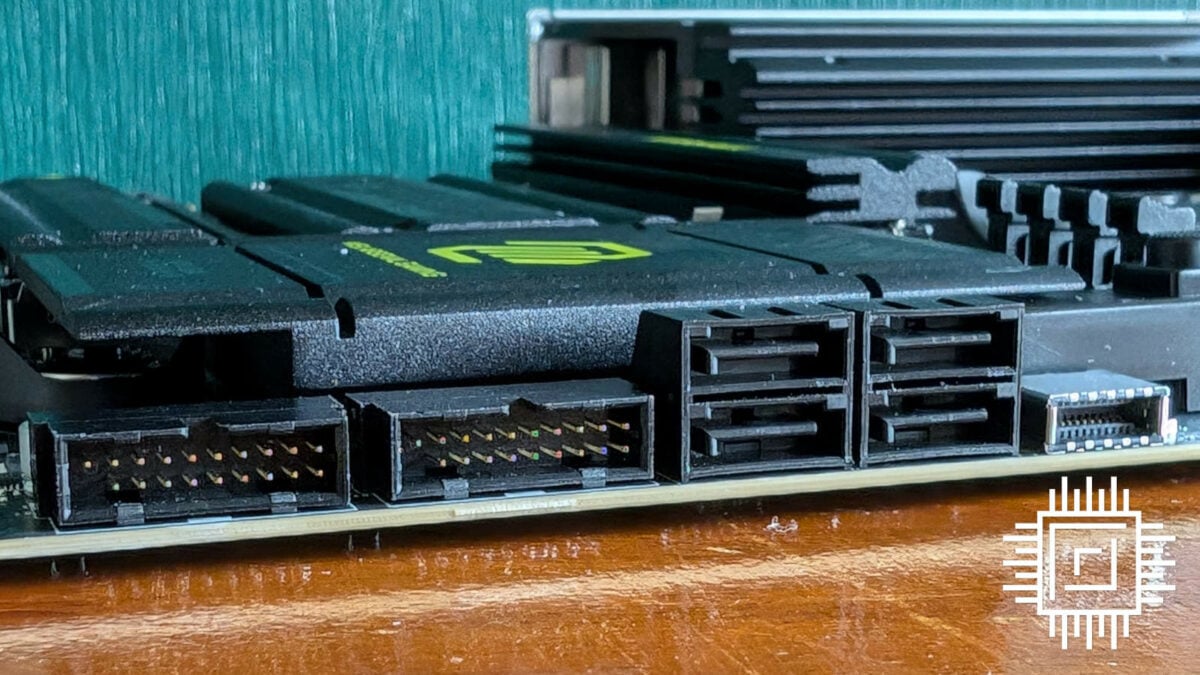
Finally, supported RAM speeds jump to 8,400MT/s+. This is a jump of 600MT/s, up from 7,800MT+/s. Higher is indeed better, but most users will find themselves comfortable with a 6,400MT/s kit with tight timings. Still, for those that must have speed above all, the ceiling is that little bit higher.
There’s little reason to swap out your existing X670(E) motherboard for what’s on offer here. However, those new to Socket AM5 motherboards will benefit from the forward-looking nature of these specifications. This feels all the more true as MAG X870 Tomahawk WiFi costs a mere £25 more than its predecessor. Given the current difference in cost, opting for the newer board is a no brainer. AMD is yet to sunset its 600 series chipset, so expect to see small discounts rather than massive savings on older motherboards.
Features
As part of the company’s MAG series, MSI aims this motherboard at mainstream gamers. While not as feature-rich as an MPG or MEG, it comes with a surprising number of conveniences and useful tools. Furthermore, there are several improvements in its design that make it much easier to live with as the bedrock of your system.
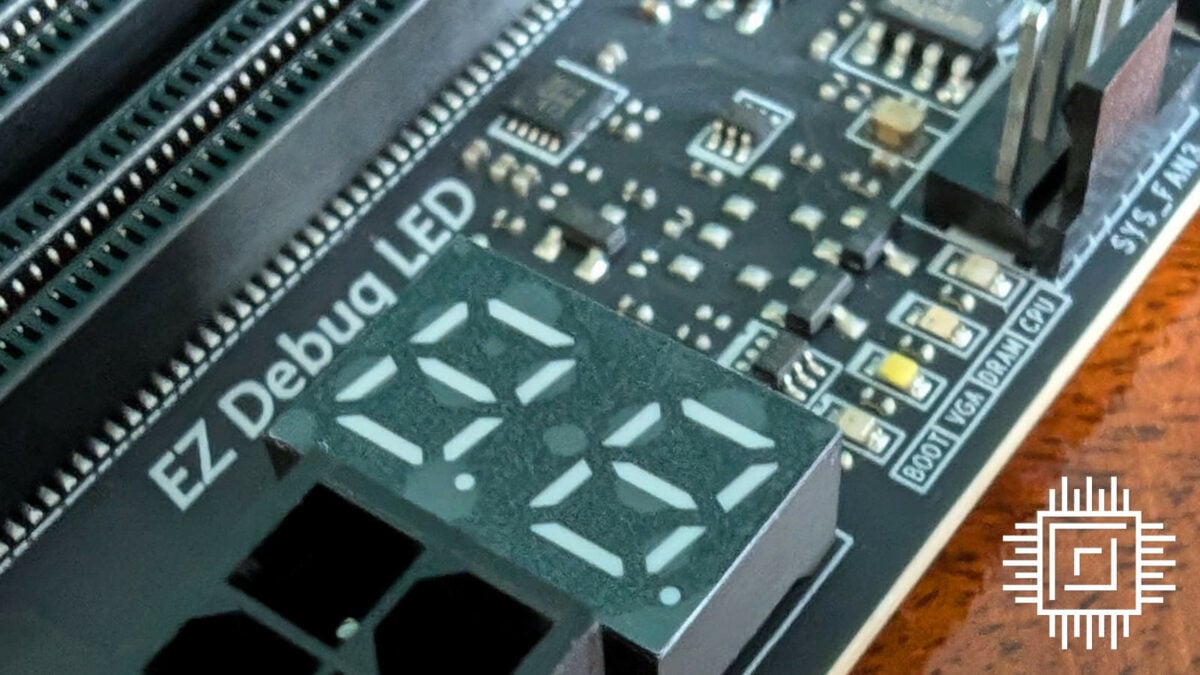
‘EZ’ by name, easy by nature. Every feature that falls under this moniker is a welcome addition to MAG X870 Tomahawk WiFi. Save for the always welcome Debug LED array (now backed by a Digi-Debug error code display), the reset of the set is either new or improved for this version of the motherboard.
Starting with my favourite, the board now has a PCIe release button that makes slotting graphics cards in and out of the primary PCIe 5.0 x16 slot a breeze. Further aiding the process, MSI includes a helpful padlock symbol that indicates the locked/unlocked status of the slot. ‘Steel Armor’ reinforcement around the slot is also a welcome touch, increasing its strength and durability in the face of ever-bigger GPUs.
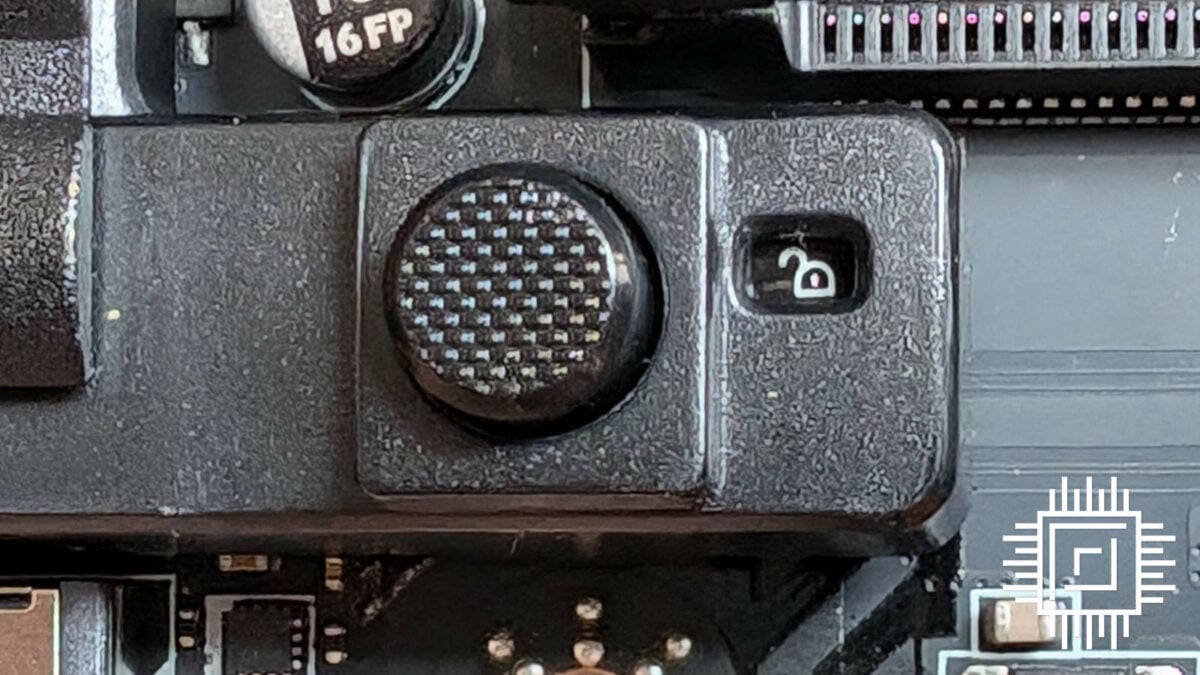
SSD installation is also more convenient, thanks to the company’s new M.2 Shield Frozr II heatsinks. For both the top and bottom slot, a latch mechanism in place of screws of old makes removal and reinstallation a doddle. A heatsink held on by screws still covers the other two slots, but this relative inconvenience has a minor impact at most.
MAG X870 Tomahawk WiFi also features MSI’s ‘EZ M.2 Clip II’ nub, used to keep M.2 SSDs in place. While it’s not a revelatory departure from customary twisty clips, used on all but one slot, it does eliminate the fiddliness of properly orienting them in favour of a simple pull-and-release mechanism.
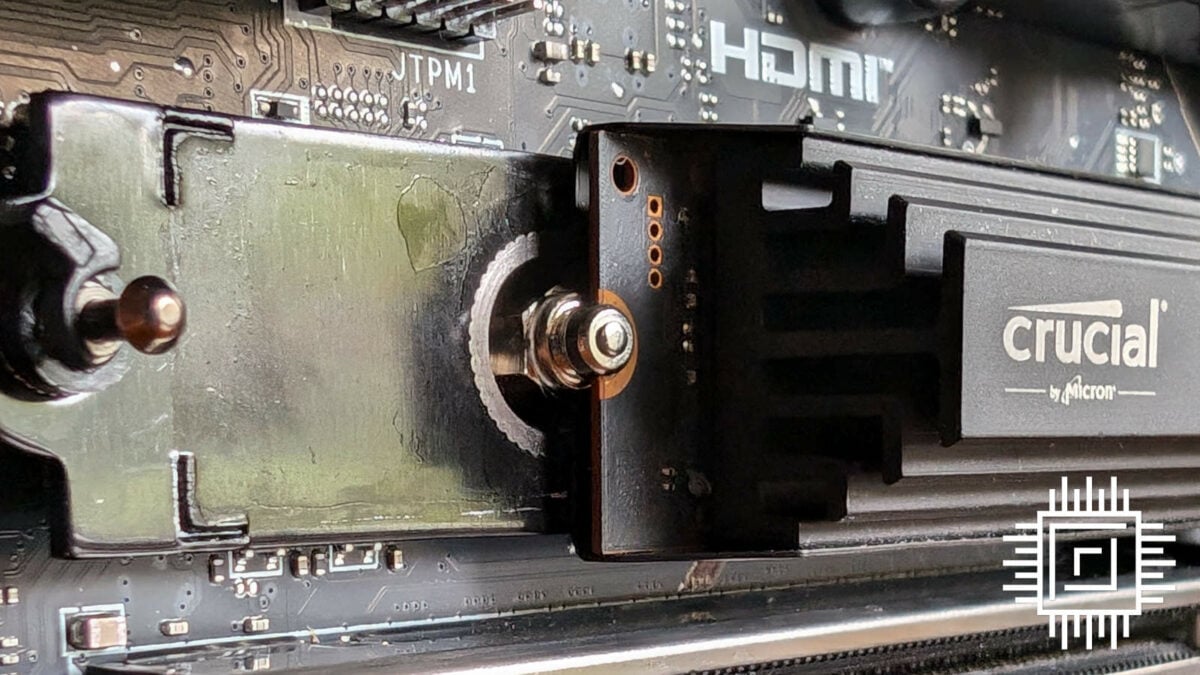
Elsewhere, you’ll find a new JAF_2 header. This is a proprietary connector that primarily benefits those with particular MSI coolers and fans. However, the company includes an adaptor that serves as a 3-in-1 for ARGB, Fan, and USB power, making it usable for a wider range of products. Less cable clutter in the main chamber is always a win in my book, regardless of the spaghetti lurking behind a chassis’ back panel… and that quality applies here.
Also debuting on MSI’s X870 motherboards is ‘PCIe Supplemental Power’. Towards the bottom of the motherboard, you’ll find an eight-pin PCIe port. If you have a GeForce RTX 4090 or similarly watt-hungry graphics card, this additional bit of power should help your system maintain stability and high levels of performance. Using a lower-end card, like our Radeon RX 7800 XT, however, sees no difference.
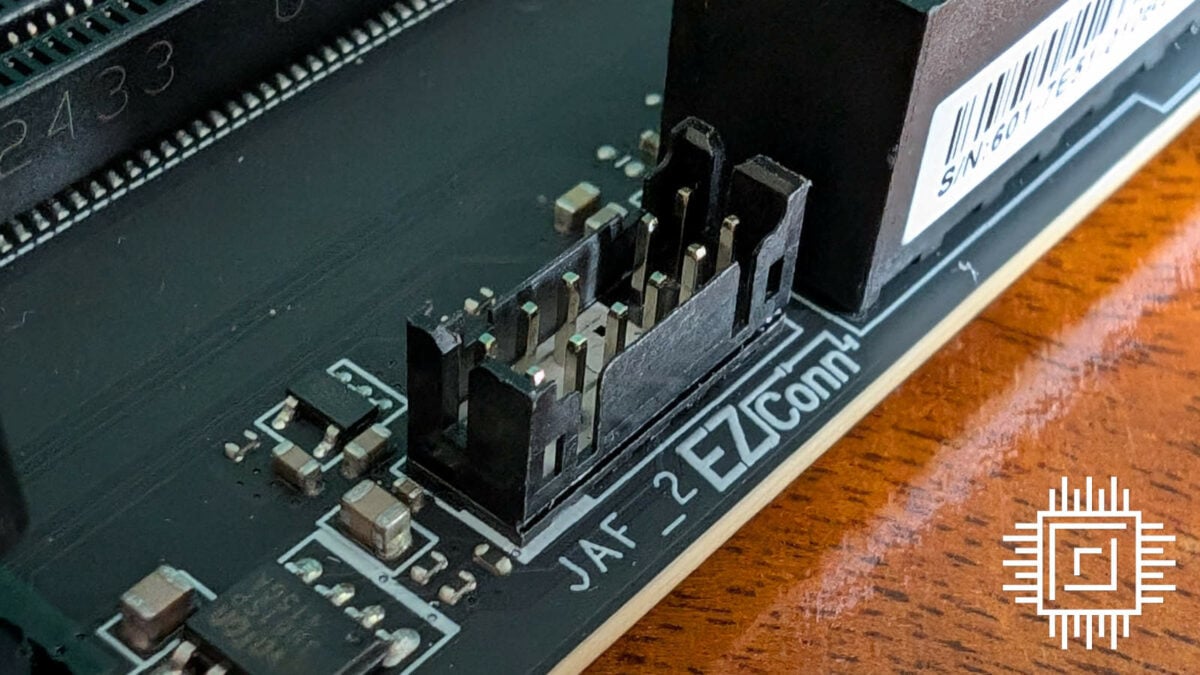
The I/O has received a small glow up alongside the PCB too. In addition to the returning Flash BIOS button, MAG Tomahawk X870 WiFi now boasts a Clear CMOS button. Alongside the aforementioned Debug LEDs, this suite of tools makes it much easier to tinker with the board, as recovery is a literal button press away.
MSI has also done away with rotating fasteners on the Wi-Fi antenna for a simple plug connector. This change has been a long time coming and I can’t wait to see the back of the old connector as I hope this standard becomes more commonplace.
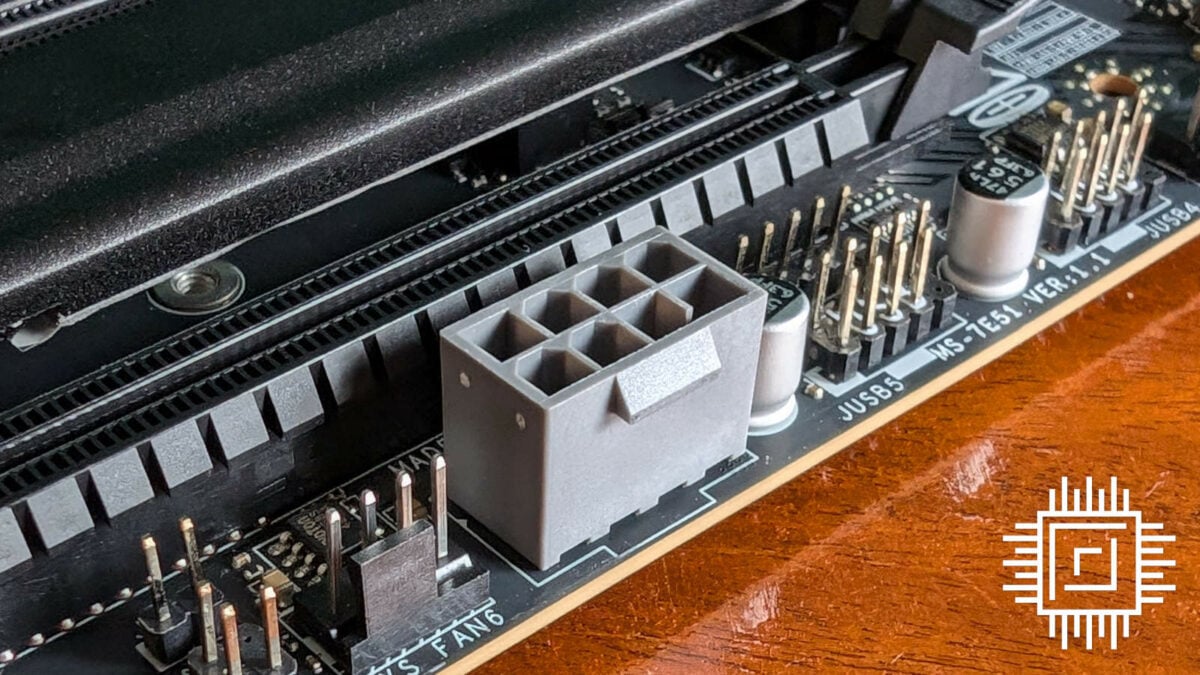
When it comes to features, there’s little faulting MAG Tomahawk X870 WiFi. It’s also nicer looking that its predecessor, with more curves and a darker colour scheme. However, some may find its green accents make it more difficult to create a uniform build. As someone that paradoxically has a case with a tempered glass panel tucked away underneath my desk, aesthetics are very much a secondary concern to usability. On the latter front, this motherboard more than delivers.
Firmware
After rocking Click BIOS 5 on its motherboards for almost a decade, MSI is refreshing its firmware with Click BIOS X. Much as the majority the appeal lies in more modern aesthetics, the changes here are more than skin deep.
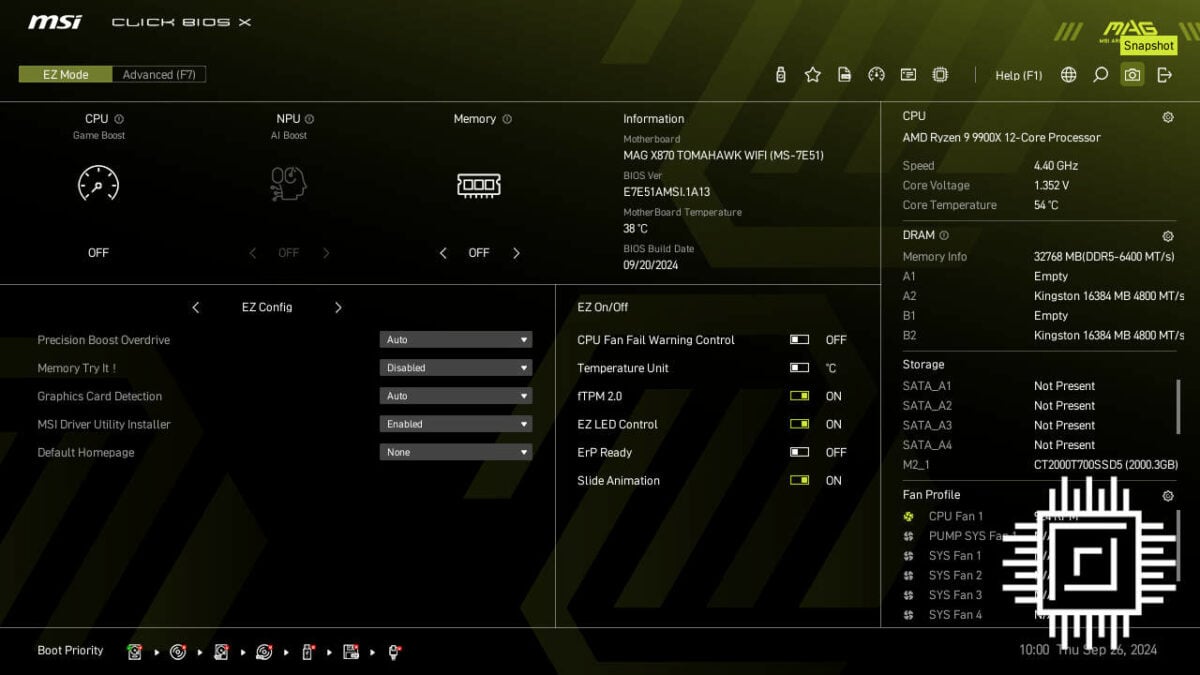
By default, Click BIOS X loads in EZ Mode. From here, you’re able to enable classic features such as ‘Game Boost’, a one-click CPU overclock, as well as XMP profiles for your RAM. Conveniently, the tooltip next to the latter toggle will provide details on the speeds and timings each profile uses. There’s also an option for NPU overclocking but our processor doesn’t support this owing to its lack of a neural processing unit. A sign of things to come for future Ryzen CPUs, no doubt.
Elsewhere, further panels provide details on other metrics relating to your CPU, RAM, storage, and fans, as well as toggles for options such as fTPM 2.0 and Precision Boost Overdrive (PBO). The layout feels more intelligent with its use of space than the prior version, with more information available to you at a glance. Of course, all the goodies you’d expect in the ‘Advanced’ view are all present too.
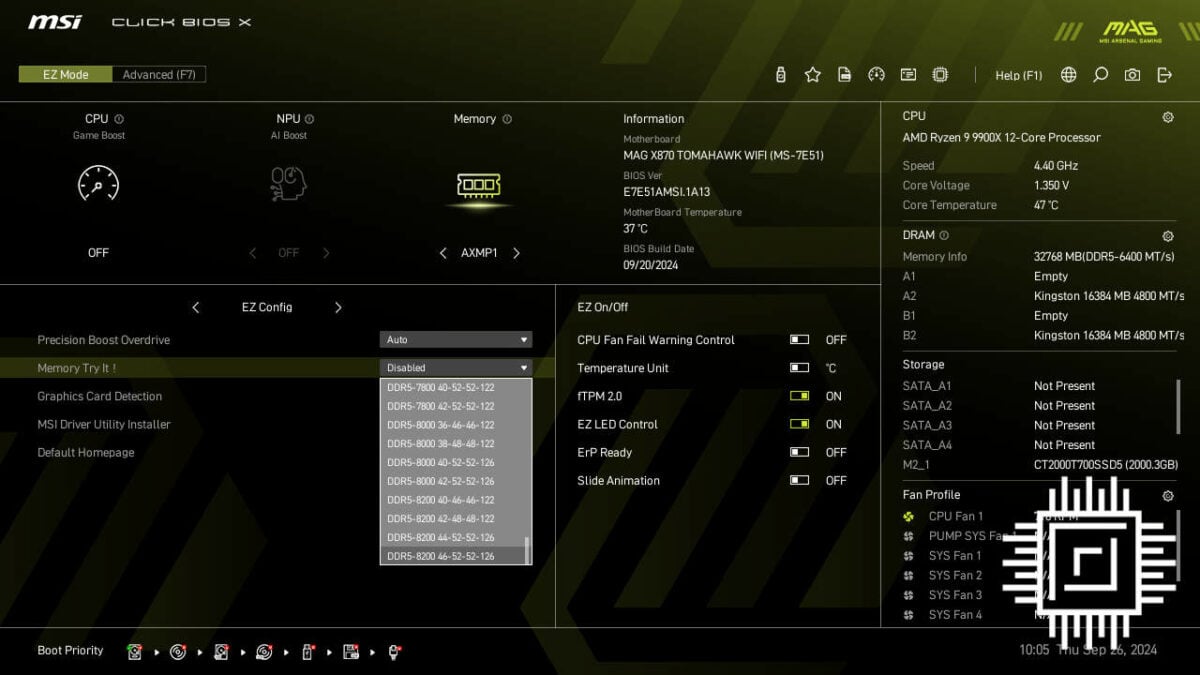
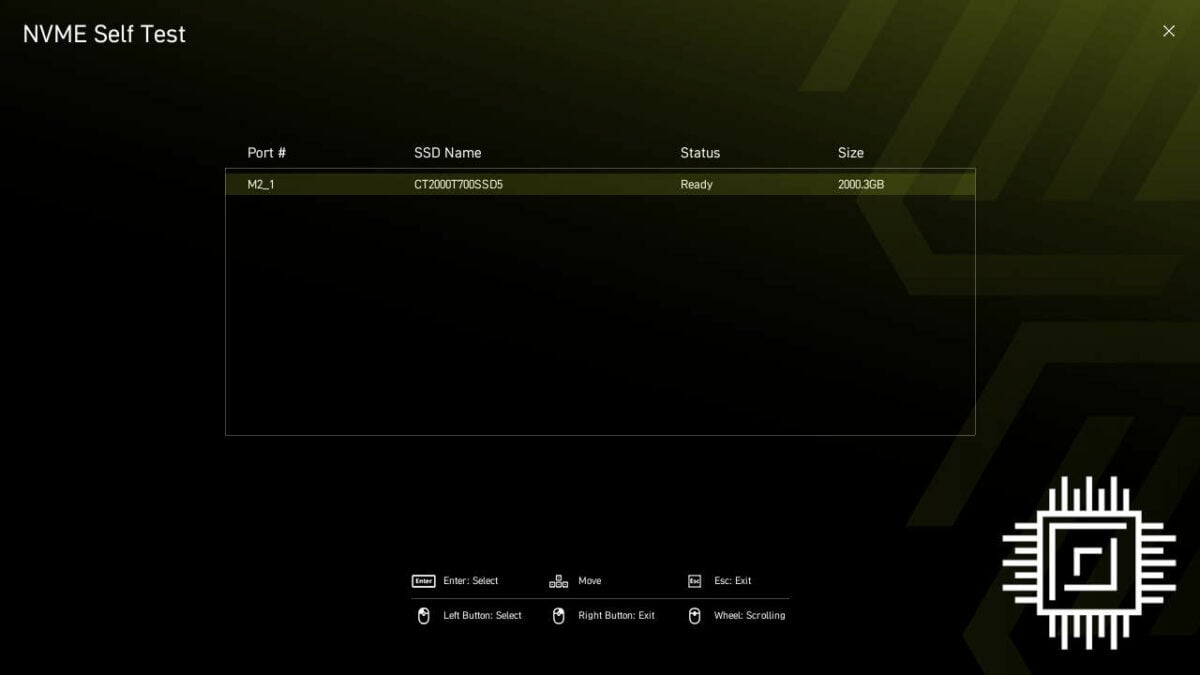
MSI includes two new features with Click BIOS X. ‘Memory Try It !’ is a one-click memory overclock, with options including the board’s maximum supported speed of 8,200MT/s. The mileage you get from it will of course vary depending on you RAM kit, but I was quickly able to get my native 4,800MT/s sticks up to 8,000MT/s with CL40 timings. Not bad at all.
The other notable addition is ‘NVMe Self Test’. This allows you to test the memory controller of your SSD in case of failure, saving you from the otherwise impossible task of troubleshooting such an error yourself. Hopefully you’ll never need to use it, but it’s a useful tool to have that could save you an otherwise unnecessary RMA of the motherboard.
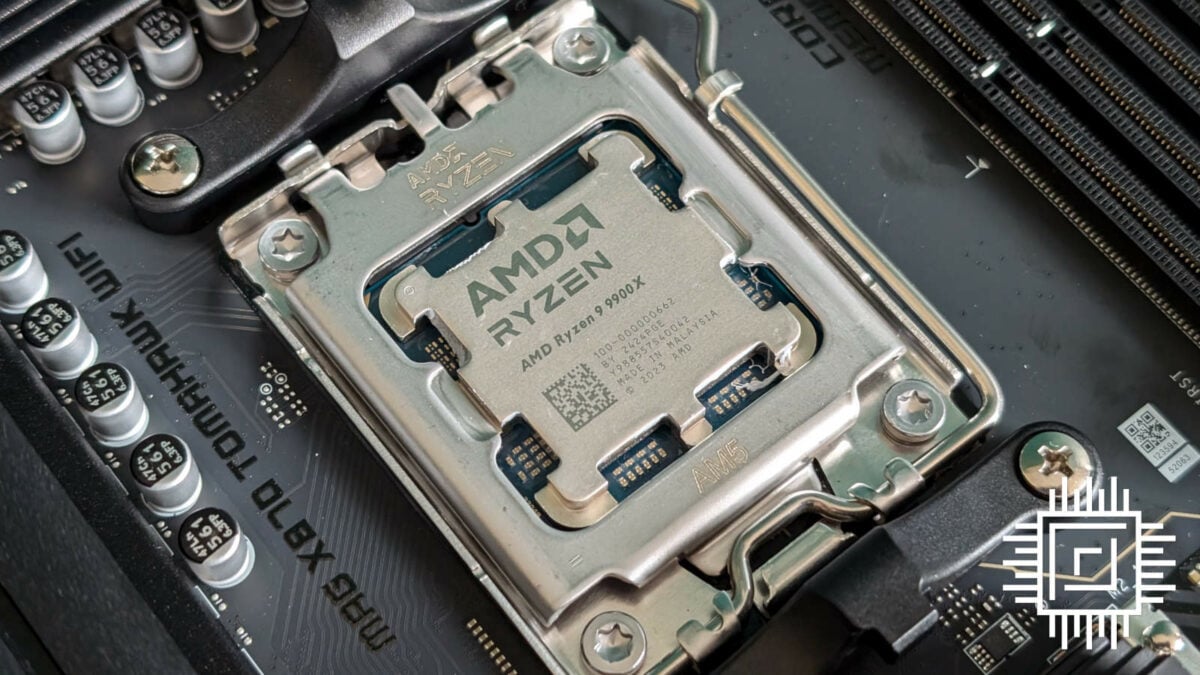
Performance
Pitting MAG X870 Tomahawk WiFi against ASRock X870E Taichi Lite demonstrates that the non-extreme chipset offers plenty of performance. Our test system features a Ryzen 9 9900X, Radeon RX 7800 XT, Crucial T700, Noctua NH-D15 chromax.black, be quiet! Dark Power 13 1,000W and 32GB of Kingston Fury Renegade DDR5-6,400 RAM.
| MAG X870 Tomahawk WiFi | ASRock X870E Taichi Lite | |
|---|---|---|
| AIDA Read (MB/s) | 77,642 | 78,445 |
| AIDA Write (MB/s) | 82,827 | 83,941 |
| AIDA Copy (MB/s) | 72,279 | 72,881 |
| AIDA Latency (ns) | 70.2 | 71.2 |
| Cinebench 2024 1T (Score) | 137 | 136 |
| Cinebench 2024 MT (Score) | 1,826 | 1,809 |
| PCMark 10 (Score) | 11,490 | 11,308 |
| 3DMark Time Spy (Score) | 18,768 | 18,715 |
| 3DMark Steel Nomad (Score) | 4,161 | 4,160 |
| CrystalDiskMark (Seq. read / Seq. write) (MB/s) | 12,387 / 11,827 | 12,396 / 11,812 |
| Avatar: Frontiers of Pandora (Min. FPS / Avg. FPS) | 64 / 81 | 64 / 82 |
| Cyberpunk 2077 (Min. FPS / Avg. FPS) | 66 / 76 | 66 / 77 |
| F1 2024 (Min. FPS / Avg. FPS) | 91 / 105 | 91 / 105 |
| FFXIV: Dawntrail FHD (Min. FPS / Avg. FPS) | 83 / 182 | 82 / 177 |
| Mount & Blade II (Min. FPS / Avg. FPS) | 172 / 260 | 170 / 259 |
| VRM temperature (°C) | 47.5 | 44.7 |
| Power consumption (Idle / Load) (W) | 156 / 312 | 121 / 297 |
The two motherboards trade blows with one another, with X870E Taichi Lite gaining a small upper hand in terms of VRM temperatures and efficiency. These aren’t slam dunks by any means, though, further strengthening the value of MAG X870 Tomahawk WiFi.
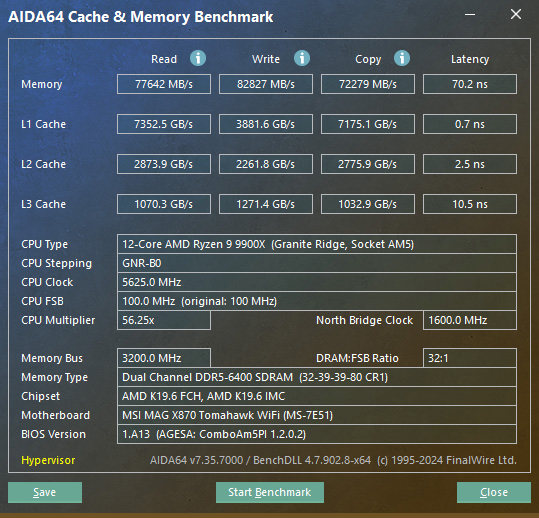
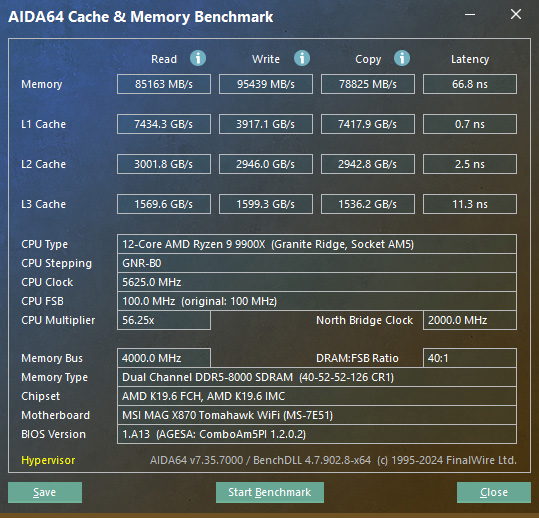
Using the board’s built-in overclocking features, our ‘Game Boost’ CPU overclock strangely didn’t net any additional performance in Cinebench or games. However, the 8,000MT/s memory profile did see AIDA64 results jump to 85,163MB/s (Read), 95,493MB/s (Write), 78,825MB/s, and reduce latency to 66.8ns.
Naturally, if you’re a dab hand at manually overclocking your kit, there’s plenty of thermal headroom for you to play with. That’s not forgetting the additional GPU power afforded by the supplemental port. For those already familiar with MSI Click BIOS 5, you’ll feel right at home with the options available in Click BIOS X.

Conclusion
The advantages MAG X870 Tomahawk WiFi offers relative to its X670E equivalent go beyond its specifications. While faster RAM speeds, USB 4, and WiFi 7 have a small amount of appeal, MSI has made sure to boost value where it can with design improvements and new features.
£279.99 feels like an appropriate price point relative to current X670E prices, but it’s unclear how the release of X870 will impact the cost of older motherboards. As such, while this iteration of MSI’s Tomahawk is the better buy relative to its predecessor this could quickly change.
For now, though, the convenience of its EZ suite of features, Click BIOS X, and support for the latest connectivity standards make picking between the two an easy task. Were I building a Socket AM5 system today, this motherboard would easily make my shortlist
MSI MAG X870 Tomahawk WiFi
Verdict: An improved design, better specs, and competitive price make this motherboard a must buy.
Pros
Convenient features
Great connectivity
Smart BIOS
Good value
USB 4 & Wi-Fi 7
Cons
Small uplifts from X670E
Limiting colour scheme
Buy

